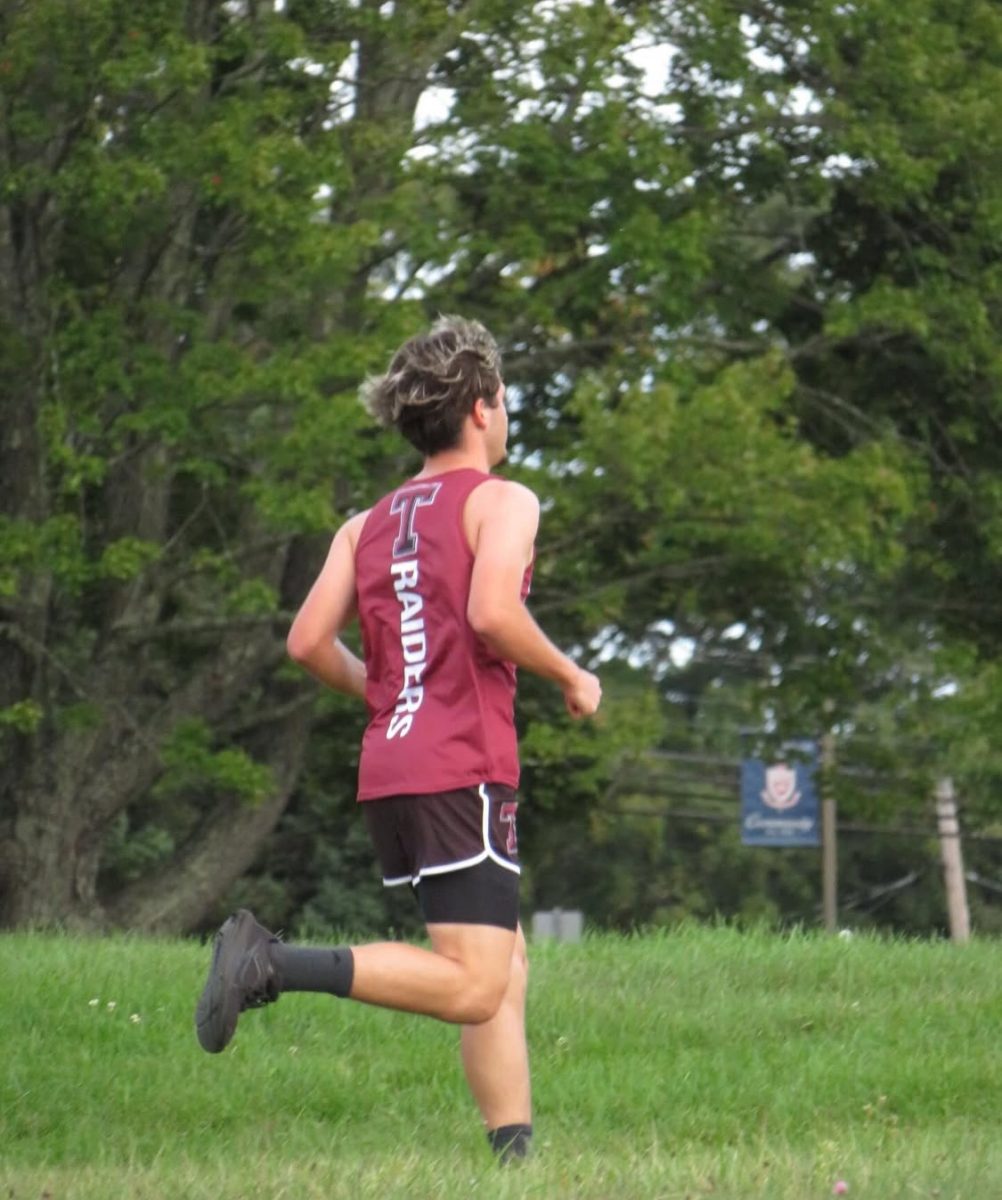For the first time in 10 years, Indoor track had an opening for head coach. Since the position opened Mr.Cahill has confirmed that he’ll be filling the role for the 2024-2025 season. Indoor track meets take place in a closed facility on a 200m track however, weekly practice remains outside unless the weather becomes unsafe for students. As temperatures drop some events such as pole vault are unable to be refined unless students attend independent practice sessions at local indoor facilities. Despite the sport’s limitations, Cahill is prepared to run an innovative and successful first season.
Personal Mantra
Formally, Mr. Cahill has 4 years of coaching experience but leadership has always played a foundational role in his life. During his teenage years, Cahill led swim lessons and taught snowboarding. He was a camp counselor and eventually sought a career in education. With a variety of experience in leadership and an interest in teaching, Cahill notes that coaching felt like “the natural next step.” Cahill’s approach to coaching is centered around personal growth he reassures athletes, “You don’t have to be the fastest on the team, just be there and take it seriously even if you aren’t the best.” He encourages athletes to “give 100% everyday” emphasizing the importance of consistent effort.
Cahill is hopeful this season will be a chance to improve technical skills-like race strategy while team building. “I’d like to see a competitive track culture and I think we’re heading in that direction” With such a large team, many of Coach Cahill’s conversations with athletes occur in between workout sets. In the upcoming seasons he’d like to implement more ways to build stronger relationships with his athletes, emphasizing opportunities to meet families and learn more about who athletes are when they’re not on the track. Cahill referenced his personal memories of pre-meet team dinners or “psyche parties” as one way to accomplish this goal.
Plan for Progress
Cahill predicts that the season’s main challenges will be adapting to a coach shortage. As of late, indoor track has three coaches as opposed to the four present in past years. Together, coaches will have to curate workouts tailored to the unique muscle groups used in each event category. Both high and long jump will have an experienced coach to guide them; however, curating workouts for hurdlers and throwers will be a learning curve. Distance will also be taking an adaptive approach to the season. Cahills plan is to “build a strong base during indoor [and] do more speed work during outdoor.” Throughout the season distance workouts will focus on strength training and improving race strategy.
During Indoor, sprint races jump from a 55m to a 300m creating the subcategories of short and long distance sprinting. Both of these events will require a unique regime to strengthen the different muscle groups. Workouts will surround form improvement and strength training with weights. Coach Josh will not be returning for the season but, Cahill notes that his workout plans will still be incorporated into practices. While preparations are being made to start the season off strong, Cahill gave his sympathy to veteran athletes who may not find this season as propelling: “I wish I could give them more because they deserve it.”
Aside from technical challenges, Cahill addressed possible misconceptions about the rigidness of his coaching style providing insight on his perspective: “I think I have a degree of understanding [that is] different from what people expect.” Every student has different strengths and limitations. With such a large scale team it can be difficult to gain an understanding of each athlete’s situation. “There are conflicts [students] see as valid that I don’t necessarily see as valid. I think my response isn’t always what they want to hear [but,] I try to be as understanding as I can.”
Varsity thrower, Kejada Fraser builds on this to suggest that providing context is fundamental to effective communication. “He is a very flexible coach once you communicate with him, “Communication is key” is something he often reiterates. He expects the best of his athletes and has no problem telling you that at the end of the day you are a varsity athlete in an already competitive varsity sport.
Any sport comes with the expectation that athletes are prepared to work hard and stay committed but, Cahill encourages students to strengthen more than just technical skills emphasizing the importance of self-advocacy.













